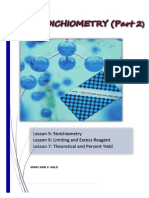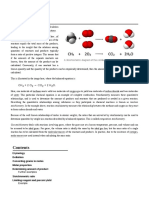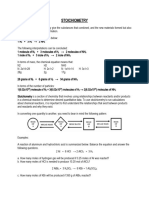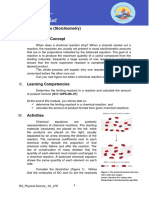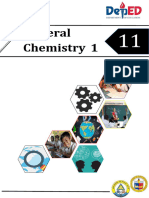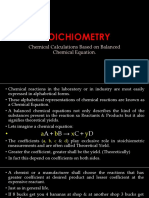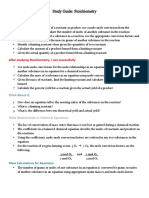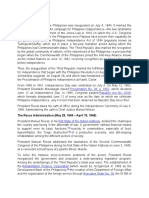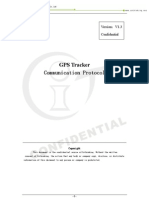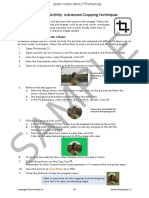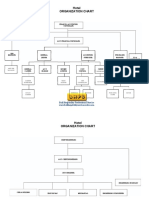0% found this document useful (0 votes)
172 views37 pagesModule 6 Stoichiometry 1
The document provides an overview of stoichiometry, emphasizing its definition as the quantitative study of reactants and products in chemical reactions. It includes activities that relate stoichiometry to cooking, methods for solving stoichiometric problems, and the concepts of limiting and excess reagents. Additionally, it features a quiz to test understanding of stoichiometric principles.
Uploaded by
josephgalospanisCopyright
© © All Rights Reserved
We take content rights seriously. If you suspect this is your content, claim it here.
Available Formats
Download as PPTX, PDF, TXT or read online on Scribd
0% found this document useful (0 votes)
172 views37 pagesModule 6 Stoichiometry 1
The document provides an overview of stoichiometry, emphasizing its definition as the quantitative study of reactants and products in chemical reactions. It includes activities that relate stoichiometry to cooking, methods for solving stoichiometric problems, and the concepts of limiting and excess reagents. Additionally, it features a quiz to test understanding of stoichiometric principles.
Uploaded by
josephgalospanisCopyright
© © All Rights Reserved
We take content rights seriously. If you suspect this is your content, claim it here.
Available Formats
Download as PPTX, PDF, TXT or read online on Scribd
/ 37











